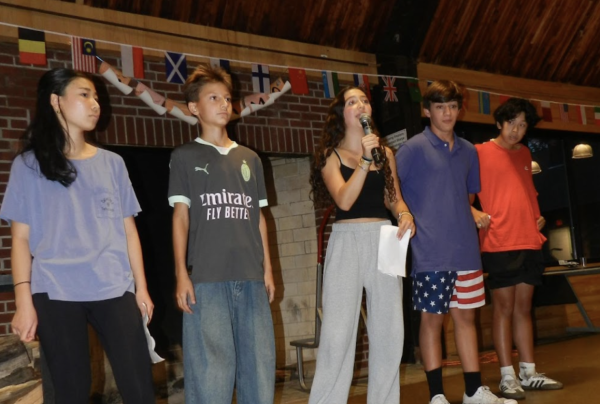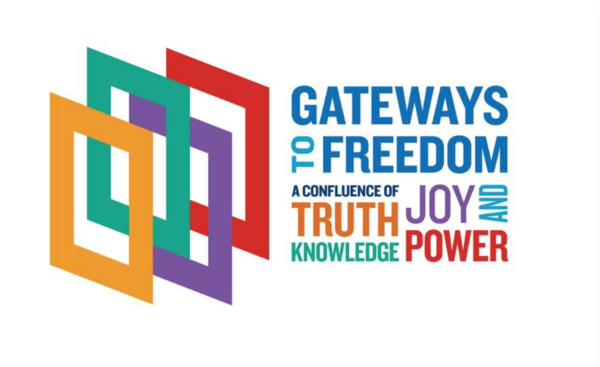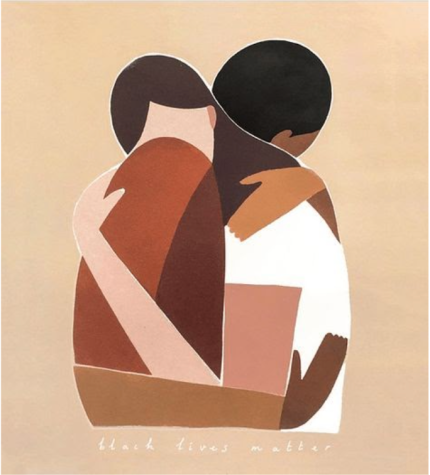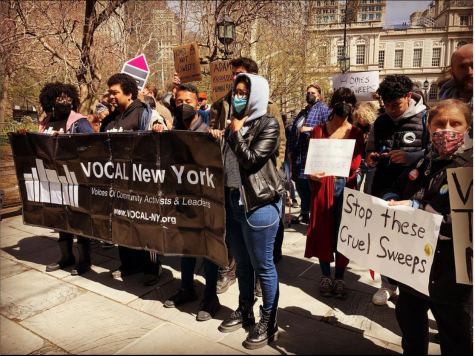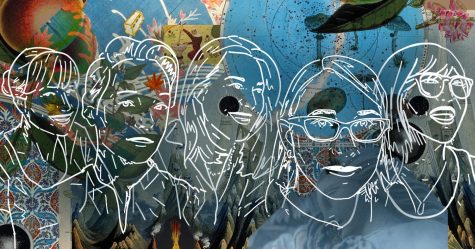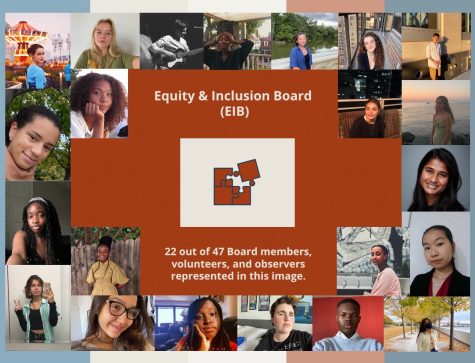UNIS’s Gender Divide
A look into the gender dynamics at UNIS
Photo by Feewiki, CC BY-SA 4.0
Processed with VSCO with c1 preset
You know it, we know it, let’s talk about it.
In many IB classes and Tut House clubs at UNIS, there tends to be a specific gender dynamic in terms of the female to male ratio. Why might this be the case? Through interviews and investigation within the school, we tried to answer this question by examining the opinions of students on the gender dynamics within their classes and clubs.
Gender systems are defined as the social structures that determine the number of genders and their associated “roles” and relations. These roles inform societal expectations regarding how we should act, speak, dress, and what environments we should involve ourselves in. Some of these gender roles are explicit— we find them and the stereotypes that stem from them proliferated in our own lives and in the media— whereas other sub-categories of gender roles are more implicit. Our school, like the many others across the country, is a microcosm of society that is influenced by its gender roles and norms, affecting how students of different genders interact with class participation and class choices.
Gender roles and norms that emanate from gender systems are socially constructed, and thus, are fragments of different beliefs that stem from our history and interactions with the world around us. Though we may not realize it, these gender systems play an integral role in shaping the way we perceive certain subjects as well as what subjects we involve ourselves in.
Part 1: The Sciences and Math
Let’s first take a look at gender dynamics in STEM education in the United States as a whole. According to the National Science Foundation, the percentage of undergraduate engineering degrees awarded annually to women in the U.S. has remained relatively constant at around 20% over the past two decades. Furthermore, when looking at doctorate degrees awarded by U.S. institutions in 2020, only 43% of Science and Engineering doctorates went to women, a ratio that has remained stable since 2009. There are many factors contributing to this gender gap, as identified in a report by the American Association of University Women. These include the common stereotype of men being ‘better’ than women at science and math, the presence of a discouraging environment for women who undertake the field of STEM, and a general preference for women to work towards degrees in which they believe they could have a direct social impact.
For the IB at UNIS, the sciences are a mandatory course and students have a choice between Physics, Biology, Chemistry, and Environmental Systems and Societies. Biology, ESS, and in some cases, Chemistry, tend to be female-dominated—one of the Biology classes, for example, had a female to male ratio of 14:3,— whereas Physics tends to be more male-dominant. Nonetheless, the predominance of women in sciences like Chemistry and Biology shows how there has been a push against this stereotype. Dr. Nouran Aboelregal, a pharmacist in the Department of Oncology at Mount Sinai Hospital, provided insight into her experience as a woman in the STEM field. In regards to the influence of gender roles, she stated that “the pressure to break stereotypes is a factor in what pushes women to pursue STEM […] Within the classroom setting, I felt as if there was a particular image of me that I needed to fit, and as I grew older, I grew past this, I felt the need to break this perception, so I chose to pursue a career in medicine.” Dr. Aboelregal’s experience exemplifies that breaking the ‘standards’ and stereotypes of the expectations of women deeply integrated into our society can be a source of motivation and drive for some women. This likewise exemplifies the ‘parallels’ of gender dynamics within a certain class versus the broader field of its study; Dr. Aboelregal confirms the direct influence of the gender dynamics within classrooms, as an incentive to her career choice. Students had additionally agreed on this, and we can also see the evidence for this ourselves by observing subject-specific classrooms.
Nonetheless, while the archaic stereotype of women not being as talented in STEM seems to have faded in the more tangible sciences, the more theoretical, math-intensive science— Physics— remains more male dominant, potentially reflecting how it persists here. A T3 HL Biology and Chemistry student: Luna Annunziata, explained that “masculinity” is associated with classes such as physics, computer science, math, etc. which are perceived as more concrete and ”logical”. Therefore, what feeds directly into these stereotypes about gender are these gender roles, systems, and norms.
Maya Din (T3), an IB Physics HL student, emphasizes that “girls can be intimidated to pursue STEM”. In her class, there are only three girls out of the eighteen total students, directly contrasting HL Biology, and she points out that the gender ratio simulates and accurately “portrays the larger industry,” which may make this field daunting or uncomfortable for a burgeoning female Physics student. Hence, the subconscious pressure to conform to these gender stereotypes is not simply a coincidence, it is a self-reinforcing trend. In fact, it is often comfort rather than difficulty or degree of proficiency in a subject that seems to incentivize class choices and the gravitation towards certain subjects over others. While everyone should feel comfortable participating in class regardless of gender identity, this is often not the case in STEM subjects. However, as Maya pointed out, it can depend on your teacher. She found that having a female teacher really helped her to feel more comfortable speaking and asking questions in class. While this could be chalked up to her teacher’s personal style rather than gender, students are less likely to share their thoughts in an environment where they feel uncomfortable or their comments would be undermined. Having a female teacher can counterbalance the predominance of men in a class, encouraging more confident participation. It can be inferred, therefore, that this aspect of comfort, or lack thereof, especially relating to gender, is a major component of class participation and class choice.
Despite the Analysis versus Applications debate, we can all definitely agree that Math isn’t a piece of cake for anybody, especially in the IB. When I started the IB, I was delighted to see that I had a female math teacher for the first time at UNIS because I felt more understood, appreciated, and less inclined to shy away from speaking up in class. A part of that is because I saw a refreshing example of someone breaking down a norm that had been perpetuated throughout my time at UNIS and other schools. Being exposed to gender diversity in STEM allows female students to feel like they too can be successful in this male-dominated field.
Another standpoint to this notion is that the genders do not tend to mix on a large scale at UNIS, for example, we can usually see large groups of one gender sitting together on one side of a class, and another on a completely different side. This shows us that in some cases, same-gender interactions generally tend to be more comfortable for people. While there could be several reasons for this, we can deduce that this is at least partly a result of these gender systems that have been so heavily perpetuated within our society.
Part 2: Humanities
Taking at least one Humanities class— History, Economics, Anthropology, or Global Politics— is mandatory in the IB. However, many individual classes or courses display a gender imbalance.
An interesting example of this was brought up by two students in HL Global Politics, both in different classes, each with polarizing gender dynamics. One of the HL Global Politics classes is more female-dominant, whereas the other is more male-dominant making it possible to take a glance at the perspectives of both individuals that experience contrastingly polar gender dynamics within the same class.
When asked why she thinks that her Global Politics class is more female-dominant, Adji Djiouf (T3) stated, “[…] Just based on issues that have occurred in the decade so far, girls in our grade have been more likely to share their opinions on the world’s climate on their social media for example than the guys, and a couple of the girls I’ve seen address these issues the most make up my GP class”. Evidently, a parallel is represented between actions outside the classroom and in-class participation. However, a contrasting perspective comes from Aksaamai Ormonbekova (T3) who is an active participant in the other, male-dominant HL Global Politics class: “Global Politics is a fun class that all genders enjoy very much, however a lot of the time women feel discouraged to participate in[my] class[..]. I think this is because when it comes to humanities, even in the world we can see how the majority of politicians are male-dominated, leaving small room for female voices […] Of course, this is not to be sexist, it’s just a shared experience and a way some of us secure a comfortable seat of not having to have our opinions questioned.” Evidently, both students share different perspectives on the same subject based on the gender dynamic within their classroom. Based on these interviews alone, it is apparent that gender stereotypes influence the way we perceive a certain subject or even environment. This relates back to the concept of ‘gender systems’. Intermingling with a larger group of people where a certain gender predominates marked gender can cause a sense of imbalance, and this feeling can subsequently manifest itself in the way we perceive and interact with certain environments, or in this case, classes. Both T3 students are studying the same subject, yet, both feel differently about the gender dynamic, and in fact, felt like the subject was more geared towards whichever gender predominated in their class.
Another subject that is offered in the UNIS-IB curriculum is Social and Cultural Anthropology. Anthropology is a subject that investigates the ways in which we interact with each other within diverse communities, societies, and globally. The T3 Anthropology classes are significantly, almost entirely, female-dominated, which contrasts with other IB Humanities subjects such as Global Politics. A Decasia article showcases the gender imbalance within the field of Anthropology: the male to female ratio of Anthropology students in the year 1980 was approximately 3:4, whereas in 2007 it was roughly 3:5. Subsequently, this is an interesting reflection of the gender ratio within Anthropology inside UNIS classrooms. The article had likewise mentioned that as the general interest in Anthropology grew, so too did the disparity in gender involvement, which is interesting considering what Social and Cultural Anthropology truly is—breaking down and analyzing individuals and societies, which in many cases constitutes analyzing gender disparities in different environments. In my Anthropology class, the female to male ratio is 9:1, evidently largely female dominant. In this case, as in the STEM field, stereotypes are reflected in the gender presence within the classes, although this time the balance tilts in favor of female presence, which again raises a need to challenge the notions of gender stereotypes and gender roles by immersing oneself in the study and ultimately succeeding in it.
It can be inferred that perhaps the role of gender systems within our society is a keen topic of investigation predominantly for the female demographic because of how truly restricting these systems can be (let alone in a working environment). Potential examples of their restrictions are explicit or even implicit biases, undermining the work of women leading to their contributions in the workplace being less valued. Being able to take the lead in investigating these gender systems and stereotypes through the field of Anthropology, can be viewed as challenging or even conquering them, by having a leading role as the analysts in this sphere of study.
Part 3: Clubs
Gender dynamics at UNIS do not remain within the classroom setting, for they persist in clubs— in some cases even more so than in classes. Clubs are student-run groups meant to be open spaces for students to bond and connect by taking part in activities, discussing, and organizing events related to issues and topics that matter to them. Among the 53 clubs found in the UNIS Tutorial House this year, students can choose to get involved in academics, activism and politics, arts, culture, media and publication, or UN-related organizations. Looking at the interests they represent, we can question whether Academic clubs, which tend to be science-based, have a more male presence in the same way that science classes do. On the other hand, might clubs that are geared towards Advocacy and Media be more female-dominated? We’ll delve into those questions in the section below.
Many clubs at UNIS have a large female presence, but this does not always have to do with the field they’re geared towards. According to Ms. Polatbora, coordinator of Tut House Student Activities, there is generally greater female involvement in most Tut House clubs. However, it’s interesting to note that most clubs in the science field with a predominant female presence are those that specifically advocate for women in science, such as Girls in Tech or Women in STEM. This predominance is not surprising, since it’s part of the clubs’ missions to specifically support women in fields where they are largely underrepresented. However, other STEM-oriented clubs tend to have a more even gender membership or slightly male-dominated presence. Take for instance Math Club, where there is an even number of female and male members, or Science Club, which shows a similar pattern.
This is not to say that having clubs promoting female empowerment in STEM is negative. These types of clubs are vital so that all students, and in this case, women, feel like they are supported across all fields. The clubs can also provide a space of mutual understanding for students who are in classes with a large gender disparity. However, these clubs, in a way, still perpetuate the binary division latent within our school walls by creating spaces where male students might not feel as welcome, even if they share the same interests as all the other club members. This is not the fault of anyone specific, but rather a common misconception that people have about feminism as only being a movement for women. However, feminism is really about achieving gender equality, and for that everyone’s participation is needed, including in school clubs. Based on this conception, female-focused clubs might not be advocating feminism to its full extent, although they can only do this if the community begins viewing feminism as a movement for all and actively takes part in it.
A similar misconception rises when looking at advocacy and activism clubs specifically centered on female empowerment and activism. Two of the largest advocacy clubs at UNIS, Girl Power and (IN)Visible Women, are largely populated by female students. For instance, in Girl Power, out of the 23 total members, only two are male students. Similarly, in (IN)Visible Women, out of the more than 30 members, there are no male students. The disparity is clear, and it can be simply due to the fact that these clubs focus on women, and therefore women are the students being the ones motivated and encouraged to take part in the clubs.
The higher tendency for women in public advocacy was hinted at earlier in the article when referencing GP, and this anecdotal observation is reflected factually; in looking at all clubs focused on advocacy and activism, there is an overarching female dominance without there seeming to be a clear explanation. In a study by Pew Research Center in 2008, it was shown that teenage boys were the demographic that was least likely to write outside of school assignments. Time has passed since the study was conducted, yet the trend seems to remain in our clubs. This trend was pointed out by Ms. Polabora and can be quickly noticed by taking a glance at your past yearbooks. Take for instance the very organization for which we write, UNISVerse. A quick scroll through our member list revealed that out of the forty members in the club, there is twice the number of female members as male members. This came as a shock even to one of the editors-in-chief, Lude Edens (T3), who hadn’t realized how large the gender gap was. When asked why she thought this could be, she couldn’t find a definite answer. However, the pattern has repeated over quite some time. In the past three years, the club leaders have always been girls. Therefore it seems that there must be something that explains this. When contrasted with one of the other main media and publication clubs, the Literary Magazine (Litmag), the pattern seems to repeat itself. In the club, three of the four leadership positions are occupied by females, and among the members, only two out of eleven are males. So, what can we extrapolate from this? There might just be a wider interest in writing for pleasure, out of school requirements, amongst female teens.
When discussing activities done during free time, art and sports quickly pop up in our minds. Within UNIS sports teams, as in most athletic teams, there’s a separation between female and male disciplines. You would think that given the opportunity, girls and boys might want to come together and bond over the same sport, but judging by the member lists of sports clubs in our Tutorial House, this isn’t often the case. We have clubs like Table Tennis Club and Climbing Club which are widely male-dominated, with the exception of only a couple of female students per club, the first one being composed of more than 30 students. It seems unlikely that more girls wouldn’t be interested in table tennis, but the existing male dominance within the club might make it uncomfortable for these students to join and participate.
On the other hand, we find art to be stereotypically female-dominated. People tend to think that teenage girls are more artistic and more creative, however, this can’t be generalized to everyone. If you walk into any UNIS art classroom, or if you went to the IB Art Gallery last weekend, you will have seen wonderful art created regardless of gender. Yet it seems as though male students often avoid art, and drop the class as soon as they get the chance to. I say this judging from the number of boys in my art class when it became an elective once we entered Tutorial House; it was one boy and at least twelve girls. At the UNIS Art Club, the ratio doesn’t improve much. It has around five times more female than male members.
As in choosing IB classes, when selecting what clubs to join, students not only take into account their personal interests but also consider who will be in that club and whether there will be or not a gender disparity. This was evident in many of the examples seen above. Clubs with female leaders tend to have more female members, and the same occurs the other way around. Additionally, most students join clubs based on if their friends are joining, which can also contribute to enhancing this gender disparity if their friends are mainly of the same gender as them. Nevertheless, it’s still evident that clubs reflect student interest, and student interest seems to be very unbalanced for some fields, based on gender. Although you’re free to choose whatever club to join, you shouldn’t feel intimidated to join a club because most members are boys or girls. If you instead make your decision based on your true interests, you might be diverging from the gender binaries that have divided our school walls, and continue to do so.
Ultimately, the longevity of gender systems and gender roles in our larger society and within UNIS as a sub-society is a large contributing factor in what we choose to pursue. Feeling comfortable and listened to, being challenged in the right ways, and fostering the correct environment all come down to understanding that these ‘gender systems’ are, as we said, socially constructed. There is no right or wrong way to go about a certain field, nor is there a subject or subject area that is best suited for an entire demographic of people over another.
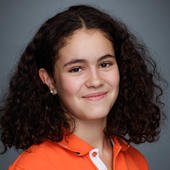
I'm Estela and I'm in the class of 2023. I love cooking, reading, and listening to music. I also highly enjoy writing, especially about issues that affect...




